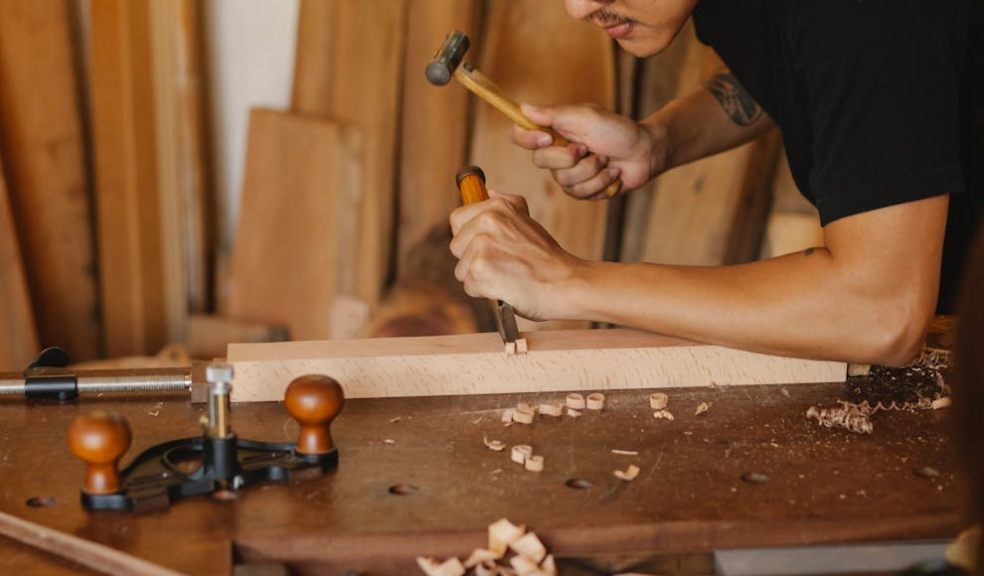
Combining Woodworking with Other Natural Materials: Stones, Metals and More
Woodworking is more than just a hobby; it's an art form that allows you to create something beautiful and functional from raw materials. Traditionally, woodworking focuses solely on wood, but why stop there? Combining wood with other natural materials can elevate your projects, adding texture, contrast, and an element of surprise.
Why limit yourself to just one medium when the world is full of natural materials that can complement and enhance your wooden creations? Imagine the charm of a handcrafted table that combines the warmth of wood with the cool elegance of metal or a stunning headboard that blends wood and soft leather. These unique touches make your pieces stand out and allow you to express your style in entirely new ways. And if you're looking for inspiration or ready-made pieces that embody this innovative approach, look no further than to Shop Luxury Furniture collections from Naturwood Home Furnishings.
Diving into the Blend: Highlighting the Beauty of Stone and Wood
Stone and wood are two materials that couldn't be more different yet work so well together. Stone adds a sense of permanence and durability to your projects, while wood brings warmth and flexibility. Combined, they create a harmonious, visually stunning, and highly functional balance.
Practical Tips for Combining Stone and Wood
First, think about the type of stone that best complements your wood. Granite and marble are excellent choices for countertops and tabletops, while river rocks and slate can add rustic charm to smaller projects. Ensure that the stone's color and texture harmonize with the type of wood you're using.
When it comes to joining these materials, adhesives like epoxy resin work wonders. For a more permanent bond, consider using mechanical fasteners like screws or bolts. Don't forget to seal the stone to protect it from stains and damage.
Design Ideas for Stone and Wood Projects
Imagine a live-edge wooden coffee table with a stone inlay running through the center. Or how about a wooden bookshelf with stone shelves? The possibilities are endless. Think outside the box and experiment with different combinations to find what works best for your style and needs. You can even use smaller stones as decorative accents on larger wooden pieces, adding a unique touch that sets your work apart.
Forging a Connection: Incorporating Metals into Woodworking
Metal and wood might seem like an unlikely pair, but their contrasting properties can create some truly eye-catching designs. Metal adds strength and a modern edge to wooden projects, making them more versatile and durable.
Techniques for Adding Metal Elements to Wood Projects
One of the simplest ways to incorporate metal into woodworking is by using metal hardware like handles, hinges, and brackets. These elements serve a functional purpose and add an industrial touch to your creations. Consider embedding metal strips or rods into the wood for a more integrated look. This can be done by creating grooves in the wood and securing the metal with epoxy or screws.
Considerations for Combining Metal and Wood
Keep in mind that different metals have different properties. Stainless steel is corrosion-resistant and ideal for outdoor projects, while brass offers a warm, vintage look that is perfect for indoor furniture. Always pre-drill holes before inserting screws to prevent the wood from splitting, and use appropriate finishes to protect both the wood and metal from wear and tear.
The Finishing Touch: Other Natural Materials to Enhance Your Projects
Beyond stone and metal, other organic materials can bring your woodworking projects to life. Leather, for example, adds a touch of luxury and comfort, making it perfect for furniture and decorative accents.
How to Introduce Leather into Woodworking
Leather straps can be used as handles for drawers and cabinets or as supportive slings for chairs and benches. You can also use leather patches as inlays on tabletops or as decorative elements on wooden boxes. When working with leather, make sure to use strong adhesives and nails or rivets to secure it in place.
Other Organic Materials to Consider
Don't stop at leather! Materials like cork, rattan, and bamboo can also add unique textures and aesthetics to your projects. Corkboard inserts in wooden frames can make for stylish and functional bulletin boards, while rattan can be woven into cabinet doors for a boho-chic look.
The Sustainability Angle
In today's world, sustainability is more important than ever. Using natural materials in your woodworking projects not only adds beauty but also helps reduce the environmental impact of your creations.
Environmental Benefits of Using Natural Materials
Natural materials are often biodegradable and require less energy than synthetic alternatives. You can minimize your carbon footprint by choosing sustainably sourced wood and recycled metals. Stone and leather, when ethically sourced, also contribute to more sustainable practices.
Ethical Considerations for DIY Enthusiasts
Always research where your materials come from. Look for certifications like FSC (Forest Stewardship Council) for wood and ensure that metals are recycled or sourced from responsible suppliers. By making informed choices, you can create beautiful projects that are kind to the planet.
Tips for DIY Enthusiasts
Starting Small and Building Confidence
If you're new to combining materials, start with small projects like picture frames or coasters. This will allow you to experiment without the pressure of a more significant commitment. As you gain confidence, you can move on to more complex pieces.
Investing in the Right Tools
Having the right tools can make all the difference. Invest in quality adhesives, clamps, and cutting tools for wood and other natural materials. A good set of chisels and a rotary tool can also be handy for detailed work.














